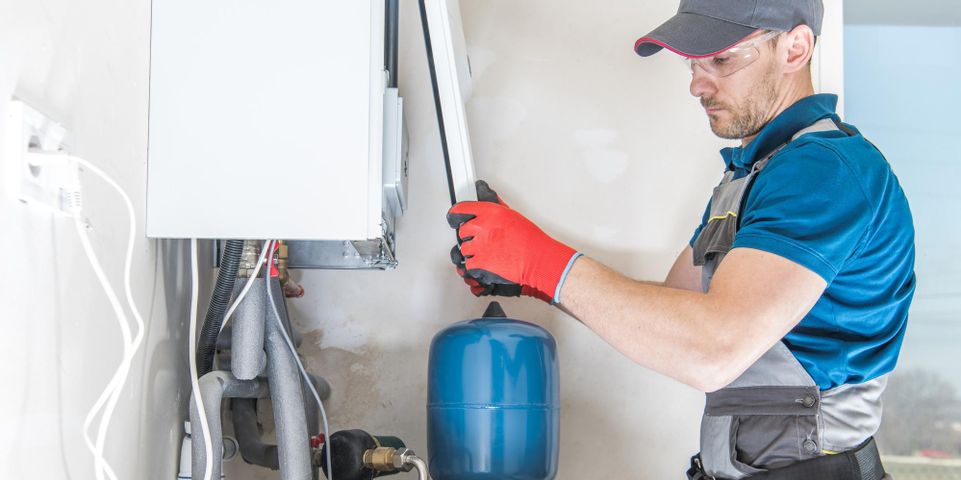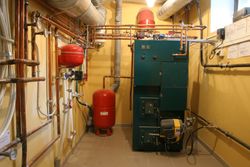
You may be confused if you see water pooling around the gas furnace. Although the appliance isn’t connected to the plumbing system, there are several reasons the nearby area can become waterlogged. Understanding why furnaces leak will help you diagnose and address the issue before standing water damages your home.
3 Reasons Gas Furnaces Leak
1. Faulty Condensate Line
New, high-efficiency furnaces have two heat exchangers, which allow the system to extract more warmth before sending heated air up the flue. This design gives gases a chance to cool, creating condensation in the chamber.
Modern gas furnaces have condensate lines that draw excess water from the furnace. However, if the pipe is damaged or blocked, the condensation will accumulate in the heat exchange until it overflows and spills onto the floor.
2. Damaged Heat Exchanger
 As condensation forms in the secondary heat exchanger, it mixes with carbon dioxide to form carbonic acid. Over time, this residue may corrode the inside of the chamber, decreasing its efficiency and creating small gaps that can leak water. Since changing secondary heat exchangers is a difficult and expensive task, replacing the entire furnace may be the most cost-effective solution.
As condensation forms in the secondary heat exchanger, it mixes with carbon dioxide to form carbonic acid. Over time, this residue may corrode the inside of the chamber, decreasing its efficiency and creating small gaps that can leak water. Since changing secondary heat exchangers is a difficult and expensive task, replacing the entire furnace may be the most cost-effective solution.
3. Broken Humidifier
Gas furnaces draw moisture from the air, leaving many people with chapped lips and dry skin in the winter. A whole-house humidifier can add some moisture to the air to make your living spaces more comfortable.
If the humidifier breaks or springs a leak, you may find water pooling around the furnace. Fortunately, fixing a humidifier is typically easier and cheaper than extensive furnace repairs.
If your house’s gas furnace is leaking water, turn to the team at South Carolina Mechanical in Conway, SC. These professionals have helped homeowners throughout the Grand Strand area maintain their HVAC systems since 2017. Visit the website to get more information about their services, or call (843) 333-1494 to request a free estimate.
About the Business
Have a question? Ask the experts!
Send your question

